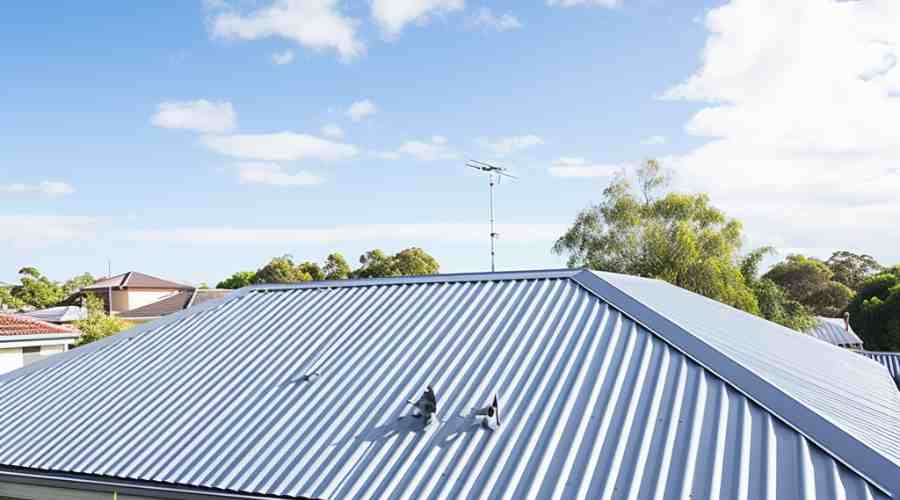Signs You Need Roof Restoration
12 Common Signs You Need To Restore Your Roof
Has your roof seen better days? If your roof is showing signs of wear, age and damage, it may be time for roof restoration to extend its life. Addressing issues early on can save you money compared to completely replacing your roof.
Here are 12 tell-tale signs to watch out for that indicate you need roof restoration services and avoid costly repairs in the future:
1. Cracked Tiles
Cracked and broken tiles are a clear sign that your roof needs some tender loving care. As your roof expands and contracts with extreme weather changes over time, tiles can become loose, damaged, or totally fractured. Loose and missing tiles make your home vulnerable to leaks, while leaving cracked unrepaired risks further damage.
Have a roofer inspect cracked and loose tiles to determine if they need roof repairs or full replacement. They can also secure areas surrounding damaged tile roofing to prevent leaks.
2. Leaks
If you have water stains on your ceilings, moisture in your attic, or see water dripping from roof penetrations when it rains, you likely have roof leaks. Even small leaks should be repaired right away before they lead to mold, rot, and decay issues. Unrepaired leaks will only grow worse over time.
Pinpointing the source of a leak is key. A roof inspection can identify failing flashings, damaged shingles, loose tiles, and other problem areas so specific repairs can be made.
3. Color Fading
If your composition shingle or concrete tile roof is looking extremely weathered and worn with faded or discolored areas, your roof’s waterproofing surface may be breaking down. Loss of granules in asphalt roof shingles also reduces their harsh weather protection.
Apply a protective sealing coat to rejuvenate and extend the roof’s lifespan. This may prolong the need for full replacement by up to 10 years.
4. Water Damage
Excessive moisture from leaks or poor ventilation leads to damage. Signs include peeling paint, soft/spongy marks, black mold, and decaying roof sheathing. If left untreated, major structural damage can occur.
Identify and fix all water intrusion points, dry out the roof assembly and attic space, and replace water-damaged materials to get your roof back into shape. Proper attic ventilation also helps control moisture.
5. Mould and Rot
Dark blotches and soft, rotting spots indicate mold and decay issues in your roof system. Prolonged moisture exposure breaks down materials and allows mold colonies to take hold. Attics with poor ventilation are also breeding grounds for mold.
Extensive mold growth poses health hazards and compromises roof integrity through decay. Combine mold removal treatment with leak repairs to fully address dampness issues. Increase attic ventilation as needed.
6. Roof Age
Asphalt shingles tend to reach the end of their functional lifespan at around 20 years, while concrete and clay tiles may last 50+ years.
If your roof is approaching or past its expected service life, restore and renew it to squeeze out extra years before full replacement is needed. Coatings, patching, flashing repairs, and tile repairs are economical ways to upgrade an aging roof.
7. Missing Tiles
It’s common to lose the odd tile or shingle here and there during high winds. However, excessive missing roof tiles or shingles mean your roof covering is failing. When key components become detached, your roof system is left vulnerable to accelerated leaking and decay.
Replace damaged and missing pieces right away as spot repairs. Storm damage may require more extensive tile replacement.
8. Rust Spots and Corrosion On Metal Roof
Metal elements like flashings, valleys, nails and fasteners, and gutters and downspouts are subject to rust over the years. Rust expansion leads to cracked paint, staining, leaks, and deterioration where water can infiltrate.
Treat rust growth chemically to prevent additional spreading. Then sand, prime, and paint rusted areas to renew metal components.
9. Broken Flashing, Ridge Capping, or Valley Irons
Your roof’s flashings, ridge lines, and valley areas endure the most weathering due to their raised exposure. When weaknesses develop in these water deflection points, leaks result. Damaged sections become fatigue from enduring years of expansion, contraction, wind, rain, sun exposure and variation in temperature. Brittle and torn areas begin to fail.
Repairing or replacing deteriorated flashings, ridge caps (shingles), and valley modern metal helps ensure reliable water runoff and prevent leaks into the roof system.
10. Sagging Roof Lines
A drooping, uneven roof line is a sign of roof decking issues. Moisture saturation causes decay and deterioration of the wood sheathing beneath shingles. Insufficient roof framing support also leads to sagging over time.
Rebuildstructure and stability into the roof deck by replacing weakened sections of sheathing and installing additional roof framing reinforcements as needed.
11. Gutter and Downspout Damage
Your roof gutters and downspouts endure a lot of wear and tear while protecting your home from water damage. Dark spots, peeling paint, holes/loose joints, overflowing, and leaking downspouts mean it’s time for repairs and maintenance.
Examine any exposed electrical wiring, like wires running from roof-mounted A/C units or solar panels. Corrosion and damage to wiring poses fire and electrocution risks.
Properly functioning gutters are critical for roof restoration process. They help preserve roof materials by diverting water safely off the roof.
12. Curled, Broken or Missing Shingles
As asphalt shingles age, exposure and thermal cycles take a toll. Shingles deteriorate and begin to curl, split and crack. Wind and storms may tear shingles loose. Shingles with significant granule loss lead to accelerated deterioration.
Replace individual damaged shingles where possible. For more extensive curling and surface wear, apply a protective shingle coating that fills in cracks and provides waterproofing.
Conclusion
Watch for these 12 warning signs when maintaining your roof’s condition. Keep up with inspections and minor maintenance every year. Address issues promptly before they mushroom into major headaches.
If your roof shows multiple signs of aging, decline and neglect, turn to a professional roofer for restoration services. With strategic repairs and protective treatments applied at the right time, you can revive your worn-out roof. Avoiding a full roof replacement for years to come. Choose durable and long-lasting roofing materials when making entire roof upgrades to maximise future performance. Invest a little into your roof surface now and save thousands down the road.


